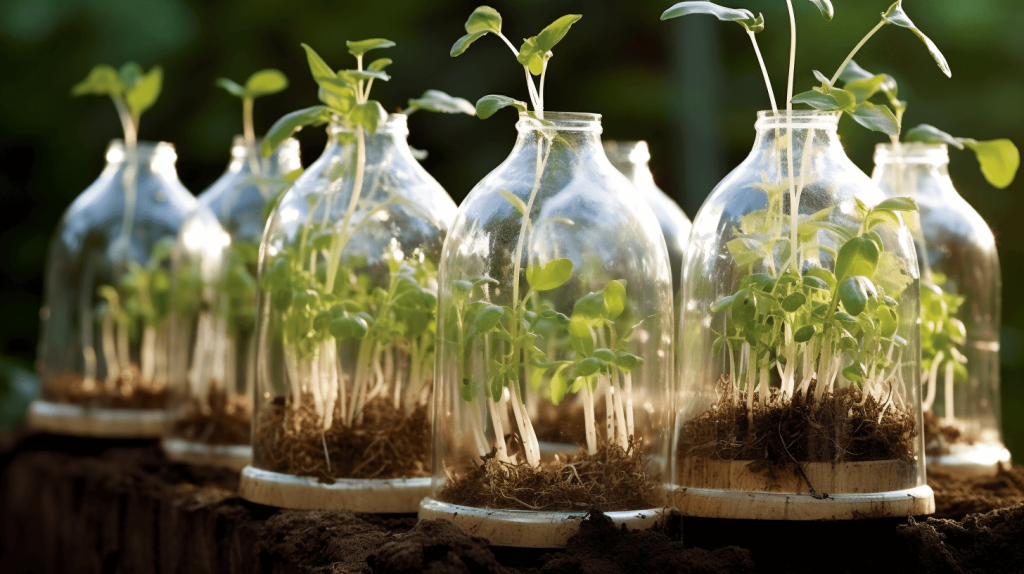
Introduction:
Gardening is a rewarding endeavor, but it comes with its fair share of challenges. Whether you’re a seasoned gardener or a novice with a budding interest in horticulture, these 33 gardening hacks are designed to make your gardening journey more efficient, productive, and enjoyable.
1. Eggshell Seed Starters:
- Use empty eggshells as biodegradable seed starters. Once the seedlings are ready to transplant, plant them, shell and all, directly into the soil.
2. DIY Watering Globes:
- Repurpose wine bottles by filling them with water and inverting them into the soil. This creates a self-watering system, keeping your plants hydrated.
3. Coffee Grounds as Fertilizer:
- Mix used coffee grounds into your soil for a nutrient-rich, acidic boost that many plants, like tomatoes and roses, love.
4. Plastic Fork Defense:
- Insert plastic forks into the soil around plants to deter pests like slugs. The prongs make it uncomfortable for them to navigate.
5. Soap Solution for Aphids:
- Create a soapy water solution to spray on plants affected by aphids. The soap disrupts their protective coatings.
6. DIY Seed Tapes:
- Mix flour and water to create a paste. Use this to attach seeds to strips of newspaper, creating your own seed tapes for easy planting.
7. Cinnamon for Seedling Health:
- Dust cinnamon on seedlings to prevent damping-off disease and discourage pests.
8. Repurposed Milk Jugs as Cloches:
- Cut the bottom off a milk jug and place it over delicate seedlings to protect them from frost and pests.
9. Wine Cork Plant Markers:
- Write the names of your plants on wine corks and attach them to sticks for charming and reusable plant markers.
10. Diaper Moisture Retention:
- Place a clean diaper in the bottom of a potted plant to help retain moisture. The diaper will absorb and release water as needed.
11. Tinfoil Sun Reflector:
- Place tinfoil around your plants to reflect sunlight onto the undersides of leaves, maximizing photosynthesis.
12. Natural Slug Trap with Citrus Peels:
- Place citrus peels near plants to attract and trap slugs. Collect and dispose of the peels along with the trapped pests.
13. Cardboard Weed Barrier:
- Lay down sheets of cardboard around plants to create an effective and biodegradable weed barrier.
14. Pantyhose Plant Ties:
- Cut strips of old pantyhose to use as gentle ties for securing plants to stakes. They provide support without causing damage.
15. Epsom Salt Lawn Booster:
- Sprinkle Epsom salt on your lawn to promote grass growth and lush, green lawns.
16. Plastic Spoon Seed Spacing:
- Use plastic spoons to create evenly spaced holes for planting seeds. This ensures proper spacing and reduces the need for thinning later on.
17. Garlic Pest Repellent:
- Plant garlic around your garden to naturally repel pests.
18. Sandpaper Seed Scarification:
- Gently rub the surface of hard-coated seeds with sandpaper before planting to encourage faster germination.
19. Plastic Bottle Watering Can:
- Poke holes in the lid of a plastic bottle to create an improvised watering can for gentle and controlled watering.
20. Onion Skin Plant Dye:
- Save onion skins to create a natural dye for coloring Easter eggs or giving a rustic touch to paper plant pots.
21. Plastic Cup Greenhouse:
- Place a clear plastic cup over seedlings to create a mini greenhouse, promoting warmth and humidity.
22. Baking Soda Soil pH Test:
- Use baking soda to test the pH of your soil. A reaction indicates acidic soil.
23. Milk Fertilizer for Tomatoes:
- Mix milk with water and use it to fertilize your tomato plants. The calcium in milk promotes healthy fruit development.
24. Nail Polish Plant ID:
- Use different colors of nail polish to mark and identify different plants in your garden.
25. Cardboard Tube Seed Starters:
- Use cardboard tubes from toilet paper or paper towels as biodegradable seed starters. Plant them directly into the soil when the seedlings are ready.
26. Plastic Fork Garden Border:
- Insert plastic forks with handles facing outward along garden borders to deter animals from stepping into your plants.
27. Vinegar Weed Killer:
- Mix vinegar with a few drops of dish soap to create an effective and natural weed killer.
28. Potato Plant Starter:
- Cut a potato into sections, ensuring each section has an “eye.” Plant these sections to grow new potato plants.
29. Plastic Bag Drip Irrigation:
- Puncture small holes in a plastic bag, bury it in the soil near plants, and fill it with water for a slow-release drip irrigation system.
30. T-shirt Plant Ties:
- Cut old T-shirts into strips for soft, stretchable ties to secure plants to stakes.
31. Red Cup Tomato Protection:
- Place red plastic cups around developing tomatoes to protect them from birds and animals.
32. Watering Jug Root Watering:
- Bury a plastic jug with the bottom removed near the roots of plants. Fill it with water for deep root watering.
33. Toothpick Germination Indicator:
- Stick toothpicks into the soil to mark the location of seeds, making it easy to identify where to expect germination.
Conclusion:
These 33 gardening hacks are designed to simplify and enhance your gardening experience. Whether you’re looking to save money, repurpose household items, or promote a more eco-friendly approach, incorporating these tips into your gardening routine can lead to healthier plants, more robust yields, and a garden that reflects your ingenuity and care. Happy gardening!


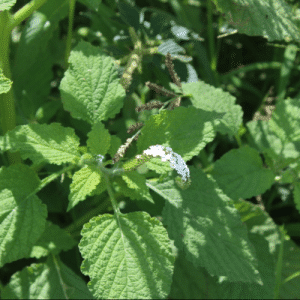
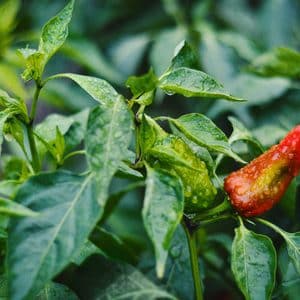

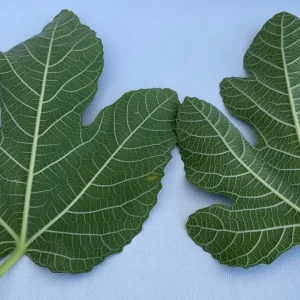
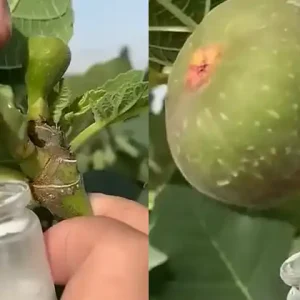
купить аккаунт с прокачкой маркетплейс аккаунтов соцсетей
платформа для покупки аккаунтов https://marketplace-akkauntov-top.ru/
маркетплейс аккаунтов услуги по продаже аккаунтов
биржа аккаунтов магазин аккаунтов
биржа аккаунтов маркетплейс для реселлеров
площадка для продажи аккаунтов заработок на аккаунтах
маркетплейс аккаунтов https://pokupka-akkauntov-online.ru/
Accounts marketplace Account Sale
Secure Account Sales Account market
Account Selling Platform Account Trading Service
Buy Pre-made Account Account Trading Platform
Account Market Database of Accounts for Sale
Profitable Account Sales Buy accounts
Account Market Account Purchase
Account Purchase Buy and Sell Accounts
Account exchange Account Trading Service
Accounts market Buy accounts
Account exchange Buy accounts
profitable account sales buy accounts
sell pre-made account website for selling accounts
account sale account trading service
account trading service social media account marketplace
buy and sell accounts https://accountsmarketbest.com/
account exchange service account acquisition
gaming account marketplace accounts for sale
account catalog buy account
online account store website for buying accounts
account exchange service purchase ready-made accounts
ready-made accounts for sale purchase ready-made accounts
marketplace for ready-made accounts https://buy-soc-accounts.org/
account trading platform profitable account sales
secure account sales account market
account trading platform online account store
guaranteed accounts account acquisition
buy account https://social-accounts-marketplace.org
account market account catalog
account catalog best-social-accounts.org
account trading service account trading service
database of accounts for sale marketplace for ready-made accounts
accounts marketplace account trading platform
account trading platform account exchange service
account exchange account market
marketplace for ready-made accounts https://accounts-store.org/
account acquisition buy pre-made account
verified accounts for sale account sale
account buying platform account trading platform
accounts for sale https://accounts-offer.org
purchase ready-made accounts accounts-marketplace.xyz
account trading platform https://buy-best-accounts.org/
account exchange service https://social-accounts-marketplaces.live/
accounts market https://accounts-marketplace.live
account store https://social-accounts-marketplace.xyz
account store buy accounts
account market https://buy-accounts-shop.pro/
account market https://accounts-marketplace.art
ready-made accounts for sale https://social-accounts-marketplace.live
profitable account sales https://buy-accounts.live
buy pre-made account https://accounts-marketplace.online/
database of accounts for sale accounts marketplace
биржа аккаунтов akkaunty-na-prodazhu.pro
купить аккаунт kupit-akkaunt.xyz
магазин аккаунтов https://rynok-akkauntov.top/
биржа аккаунтов akkaunt-magazin.online
биржа аккаунтов https://akkaunty-market.live/
покупка аккаунтов kupit-akkaunty-market.xyz
биржа аккаунтов https://akkaunty-optom.live/
продать аккаунт https://online-akkaunty-magazin.xyz/
продать аккаунт https://akkaunty-dlya-prodazhi.pro/
продать аккаунт маркетплейсов аккаунтов
buy facebook account buy facebook account
buying facebook ad account buy ad account facebook
cheap facebook advertising account buy-ad-account.top
buy aged facebook ads accounts buy aged facebook ads account
buying facebook account https://ad-account-buy.top
fb accounts for sale buy facebook ad accounts
buy facebook account for ads https://ad-account-for-sale.top/
cheap facebook advertising account https://buy-ad-account.click
В этой публикации мы предлагаем подробные объяснения по актуальным вопросам, чтобы помочь читателям глубже понять их. Четкость и структурированность материала сделают его удобным для усвоения и применения в повседневной жизни.
Детальнее – https://medalkoblog.ru/
facebook account sale https://ad-accounts-for-sale.work
buy verified google ads accounts buy google ads agency account
buy verified google ads account buy aged google ads account
buy accounts facebook buy facebook profiles
buy google adwords accounts buy google ads account
buy google adwords accounts https://ads-account-buy.work/
buy google agency account https://buy-ads-invoice-account.top/
buy google adwords account https://buy-account-ads.work
buy google adwords account https://buy-ads-agency-account.top
buy verified google ads accounts https://sell-ads-account.click
buy google ad account https://buy-verified-ads-account.work/
buy verified bm facebook buy-business-manager.org
google ads account for sale https://ads-agency-account-buy.click
facebook bm for sale buy-business-manager-acc.org
buy facebook bm https://buy-bm-account.org
facebook business manager account buy https://buy-verified-business-manager-account.org/
buy facebook bm account verified bm
verified bm for sale business-manager-for-sale.org
buy verified business manager facebook https://buy-business-manager-verified.org/
verified bm https://buy-bm.org
buy facebook business manager verified https://verified-business-manager-for-sale.org/
verified bm for sale facebook business manager account buy
tiktok ad accounts https://buy-tiktok-ads-account.org
tiktok ads account for sale https://tiktok-ads-account-buy.org
tiktok ads account for sale https://tiktok-ads-account-for-sale.org
tiktok agency account for sale https://tiktok-agency-account-for-sale.org
tiktok ad accounts https://buy-tiktok-ad-account.org
buy tiktok ads accounts buy tiktok ads
buy tiktok ads account https://buy-tiktok-business-account.org
tiktok ads agency account https://buy-tiktok-ads.org
tiktok ads account buy https://tiktok-ads-agency-account.org